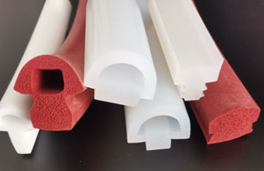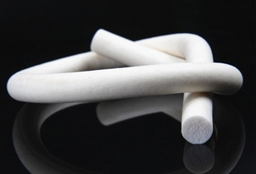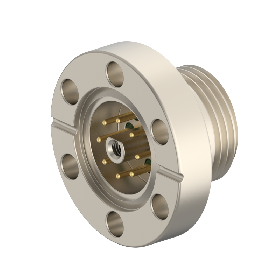To solve the vacuum rubber seal, in addition to the correct seal structure design, a reasonable selection of the sealing material is the key. Rubber's heat resistance, compression deformation, air leakage, air permeability, outgassing rate and sublimation weight loss are the main factors that affect vacuum sealing.


(1) Heat resistance. In a vacuum system, it is often necessary to degas the system or components, which is often done by baking. In this way, the rubber seal is required to have a certain degree of heat resistance to ensure smooth baking and degassing. Generally, the baking temperature is below 120℃ and the vacuum degree is 10-5Pa. Butyl or nitrile rubber can be used; if a higher baking temperature is required and the working in an ultra-high vacuum environment is required, fluorine should be used. rubber.
(2) Compression deformation resistance. In the vacuum system, a large number of vacuum seals work under compression. In order to ensure the reliability of the seal and ensure a certain sealing life, the vacuum sealing rubber should have a small compression deformation value (less than 35% at the end), and a relatively slow compression stress relaxation rate (ie, compression stress relaxation) The coefficient is larger), so as to ensure that the vacuum seal has a higher working life.
(3) Leakage rate. According to calculation and experience, in the vacuum system, when the pumping rate of the vacuum pump is 8000L/s, the vacuum degree of 5×10-7Pa must be maintained, and the rubber leakage rate shall not be greater than 5.25×10-3Pa·cm3/s.
(4) Air permeability. Different rubbers have different air permeability to air at different temperatures, which is determined by their internal structure. Butyl rubber has low air permeability due to its methyl group. The low permeability of nitrile rubber to non-polar gases is also due to the influence of the polar groups with nitrile groups. Therefore, the higher the acrylonitrile content of the nitrile rubber, the lower its air permeability. Temperature has a great influence on the air permeability of rubber. The higher the temperature, the greater the air permeability. In addition, different gases have different air permeability in different rubbers. In the same gas, the order of air permeability is: natural rubber>styrene-butadiene rubber>nitrile rubber>chloroprene rubber>butyl rubber.
(5) Outgassing rate. The definition of rubber outgassing rate is: the amount of outgassing per unit area of rubber per unit time at a certain temperature. In vacuum sealing, it is generally required to be 10-4~10-5Pa·L/s,
According to the experimental data, according to the size of the outgassing rate, various rubbers can be arranged as follows: chlorohydrin rubber> vinyl silicone rubber> natural rubber> nitrile rubber> chloroprene rubber> fluorine rubber.
(6) Sublimation of rubber (weightlessness). The weight loss of rubber under a certain vacuum and temperature is called sublimation. In vacuum sealing, the sublimation value of the sealing material is required to be small. Generally, the sublimation value is required to be less than 10%, so that the rubber seal can have a relatively stable relationship in the vacuum system of Ganying to ensure that the established vacuum is maintained. According to the vacuum sublimation value, various rubbers can be arranged as follows: natural rubber>nitrile rubber>chloroprene rubber>chlorohydrin rubber>vinyl silicone rubber>fluorine rubber.
In the high vacuum system, the main influencing factor of the rubber sealing element on the ultimate pressure of the vacuum system is the leakage rate and the outgassing rate of the material.
(Huiputech)

Z-S-CF16-0810S,Z-S-CF16-0810M,Z-S-CF16-0810L
2025-11-04
Contact : Martin
Tel : +86 18588203671
Mobile : +86 18588203671
Fax : +86 18588203671
Email : Martin@huiputech.com
Address : 3/F, Building F, GLORY Technology Park, No.2 Baolong 5th Road, Longgang District, Shenzhen, Guangdong, China.